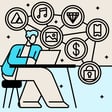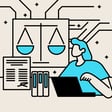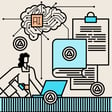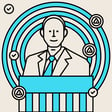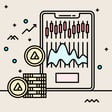Become a Creator today!Start creating today - Share your story with the world!
Start for free
00:00:00
00:00:01

Ep 1: 5 principles to guide policymakers
Join us on a journey through the 'Tree of Web3 Wisdom' with Lee Schneider, Chief Owl and General Counsel of Ava Labs, in our latest Owl Explains podcast. This episode delves into the five key branches that should guide policymakers in regulating blockchain, crypto, and Web3. We'll explore how innovation, rooted in blockchain's decentralized and transparent nature, can lead to a better Internet, drive economic inclusion, and benefit the planet. Moderated by Emma Pike from H+K Strategies, this session promises to enlighten and inspire thoughts on sensible Web3 regulation. Tune in to gain insights into shaping the future of digital policy.
Discover the Tree of Web3 Wisdom
Transcript
Introduction to OWL Explains Hootenanny
00:00:06
Speaker
Hello and welcome to this OWL Explains Hootenay, our podcast series where you can wise up on blockchain and web3 as we talk to the people seeking to build a better internet. OWL Explains is powered by Avalabs, a blockchain software company and participant in the avalanche ecosystem. My name is Silvia Sanchez, project manager of OWL Explains and with that I'll hand it over to today's amazing speakers.
00:00:34
Speaker
Hello and welcome. My name's Emma Pike. I am your host for today's Hootenanny. And I'm delighted to be talking today with Chief Owl and Legal Eagle, Mr. Lee Schneider, who is the General Counsel of Averlabs and the co-founder of Owl Explains.
The Owl Explains Tree of Web3 Wisdom
00:00:52
Speaker
And essentially, Lee is going to introduce us all to the Owl Explains Tree of Web3 Wisdom. And we're going to find out what that is all about. Hello, Lee, how are you?
00:01:02
Speaker
I'm very well. How are you doing? Maybe I should be the legal owl instead of the legal eagle. Yeah, or the legal eagle owl. There actually is an eagle owl. So we could use that. Yes. Yes. Well, good. I'm well, thanks. And I'm very much looking forward to our conversation. So should we dive right in? Yes, please. Good. So you have planted this tree.
00:01:29
Speaker
And I understand that it has got some branches to guide policymakers thinking about blockchain and Web3. But before we talk about the tree itself, let me just kick off with a bit of a provocation. Some people say that blockchain is a solution in search of a problem. What's your response? I think those people probably just don't know enough about blockchain and the internet and computer systems.
00:01:58
Speaker
You know, blockchains are actually really cool because they solve three long-standing problems in computer science, problems that have been around since the 1960s. The first of those problems is how do you get a large number of computers to agree on a common data set? And most of the solutions that existed before blockchain were susceptible to hacks and fat finger mistakes or
00:02:26
Speaker
just simply the hardware stop working and being unable to communicate. Blockchain solved that problem. The second big problem was how do you establish digital uniqueness? We human beings are very good at using our five senses to establish physical uniqueness. So when I pick up my red iPhone, I know it's a red iPhone. If I show it to you, you see a red iPhone, we both
00:02:57
Speaker
understand it is physically unique. And we use our five senses to do that. Maybe we don't lick the iPhone, but we use other of our five senses to establish its physical uniqueness. But doing that in the digital world, establishing digital uniqueness was a big issue that computer scientists were busy tackling.
00:03:23
Speaker
And then the third problem was once you establish digital uniqueness, you need to establish ownership and make those digitally unique items transferable. Um, and so what happened was many brilliant computer scientists were working on those problems, including by the way, the founder and CEO of Ava labs and then done Sarah.
00:03:48
Speaker
for many years, since the 1960s. And then all of a sudden what happens in 2008 is an eight-page white paper by person or persons going by the name Satoshi Nakamoto, elegantly solves all three of those long-standing problems. So 40 years of computer science history all of a sudden gets solved.
00:04:12
Speaker
Well, at least three problems of computer science history get solved. And so that was pretty momentous. And what's happening now is that people are iterating on that solution. Bitcoin is sort of the one of blockchains, first generation. That doesn't mean it's not amazing. It just means that people are iterating on those solutions and finding new ways to use blockchains.
00:04:42
Speaker
So not a solution in search of a problem, a solution to three hard problems. And now we'll see what human beings will build since they've solved those three hard problems. OK, excellent. Thank you. So if you were to imagine the future then, what do you think that blockchain having solved these three very significant problems
00:05:06
Speaker
How is it going to make Web 3 better than the internet that we have at the moment? Well, first I'll say, anytime you solve three hard problems, you're going to spend time figuring out what to do with those solutions, and that's what's happening right now.
Blockchain's Potential and Principles
00:05:28
Speaker
At Ava Labs, we believe in building a better internet, and we see that with a lot of other blockchain projects.
00:05:34
Speaker
The way you build a better internet now that you can establish digital uniqueness, now that you can link computers to get a common data set together, now that you can transfer ownership of digitally unique items, it really opens up all kinds of possibilities. And we're seeing it across a wide variety of industries already. And, you know, frankly, that's one of the main reasons we came up with the Tree of Web 3 wisdom.
00:06:05
Speaker
is most policymakers and regulators for a long time had been focused on cryptocurrencies and the very narrow set of what blockchains can do and what crypto assets can be. And so with our five principles of the tree, we really hope to expand people's view on what is really going on here.
00:06:34
Speaker
And so that's how we came up with the five branches of the tree. And then obviously we came up with a whole bunch of leaves for each of those branches. And there's probably more than just the leaves that we came up with.
00:06:49
Speaker
Great. So this tree has been planted in the soil, which is rich with innovation. It's sprouted its trunk and it's got these five beautiful branches with, as you say, with some leaves, some fruit, there's all sorts of things on them. Let's get into the five branches just briefly. So we'll get into them individually in a bit more depth in a second, but can you just outline what the five branches are, first of all?
00:07:16
Speaker
Yeah, absolutely. And by the way, just for your description of the tree, we should say that many owls are nesting in the tree as well. It would not be a complete tree without some owls there. The five branches briefly are, one, understand the technology. Two, beware of misconceptions. Three, classify tokens sensibly. Four, enact context appropriate regulation.
00:07:47
Speaker
And five, think global. And the idea here is that all of those branches can work together to form good base for policy platforms.
Understanding Blockchain Technology
00:08:00
Speaker
Great. So let's start with branch number one, then, which is understand the technology. Why is it important that people should understand the technology and how should they go about doing that?
00:08:12
Speaker
Well, I think I explained already the technology is revolutionary by solving three hard problems. But we really also want to understand what those solutions to the three hard problems are allowing people to do on the internet. So you previously asked me the question about what the some of the use cases are. And we're seeing all different kinds of use cases from things like trading financial instruments.
00:08:41
Speaker
to digital identity, to tracking and tracing payments and supply chain, to gaming. Most people, by the way, think gaming is just for kids until they realize it's a $45 billion a year industry in the US. And as a friend of mine likes to say, there's a lot of big kids with a lot of money out there if it's that big an industry.
00:09:08
Speaker
to many other applications. We see insurance applications and many other things being built. And so if you don't understand what the technology is capable of, we think that policymakers and regulators will just lump everything together. And that's not what the technology is capable of. That's not what people are using the technology for.
00:09:36
Speaker
And we really want to make sure that we're not re-regulating things that are already regulated just because they're occurring with a blockchain database or dataset as opposed to a more traditional database structure.
00:09:51
Speaker
Yeah, so I think that leads us really nicely into branch number two, which is beware of misconceptions. So first of all, why do you think there are so many misconceptions around blockchain and crypto and the whole space? I think one of the main reasons is, frankly, that Bitcoin started everything as a cryptocurrency. It was designed to be a currency that existed on the Internet.
00:10:21
Speaker
And so everybody took that to mean that the only use case for blockchains were financial in nature, financial instruments in nature. So creating more currencies and yeah, maybe we can tokenize stocks and bonds and swaps and futures and other financial instruments. And so I think that's the root of one of the big misconceptions.
00:10:50
Speaker
Great. But there are more, aren't there? We probably don't have time to go into all of the misconceptions, but what are your top three bugbears now as your opportunity to set the record straight? Well, I don't know if I'm setting the record straight, but look, as I said, the first one is that blockchain is not just a fintech technology. It's not just for financial instruments and trading financial instruments.
00:11:20
Speaker
It's really much broader than that. Another big one is that crypto assets and blockchain are not synonymous. It's true that blockchains facilitate crypto assets and tokenization is the way that blockchains express data on their database. But really you can facilitate all different kinds of things by tokenizing it.
00:11:50
Speaker
And so when we look at things like digital identity, for example, we see something that is loosely a crypto asset because it's digital identity on a blockchain and uses cryptography and is tokenized identity. But it's nothing to do with the kinds of crypto assets that most people are thinking about or familiar with.
00:12:17
Speaker
And maybe the last one that I'll mention is that decentralization is not necessarily permissionless and public blockchains. So you can have a decentralized set of computers that are nevertheless all permissioned to create a blockchain that is permissioned and even private.
00:12:46
Speaker
So we don't necessarily need to think of decentralization as sort of anybody can join at any time as long as they have the software. Now, there's lots of good reasons for public permissionless blockchains like that. And I think I'm personally an advocate for those. But there's also really good reasons to have more tailored blockchains
00:13:14
Speaker
where the validators are permissioned for particular use cases. Yeah. So just going back to what you were saying a moment ago about all manner of different things can be tokenized. That's a nice kind of introduction really into branch number three, which I believe is your personal favorite, which is all about classifying tokens sensibly.
Token Classification and Regulation
00:13:40
Speaker
So why is this one so close to your heart?
00:13:45
Speaker
Well, because it taps into the biggest misconception that people have. People think that blockchains are just about cryptocurrencies or tokenizing financial instruments. And my sensible token classification, which I wrote a couple of years ago, it's been through several iterations and you can find it on the Owl Explains website.
00:14:08
Speaker
now and various other places, really tries to delve into what tokenization is all about and how it can be applied to physical assets, how it can be applied to services like concert tickets or legal services, how tokenization can be applied to intangible assets. And by the way, when people say intangible assets, when lawyers say that, you know,
00:14:37
Speaker
we don't really think about what intangible assets are. So kind of intangible assets are anything that human beings dream up, right? Like stock is an intangible asset. Intellectual property rights are an intangible asset. These are examples of intangible assets because they are properties that humans give to things as opposed to properties that exist in the physical world.
00:15:08
Speaker
And then I also talk in the sensible token classification system about native DLT tokens. That is to say, tokens that are inextricably linked to the blockchain that they're built on. And that's an area where I think actually something new has been created.
00:15:29
Speaker
And so that's an area where I spend a lot of time talking with policymakers and regulators about what the regulation might look like. MICA in the European Union is an example of a regulatory regime that tries to hone in on that. The Financial Accounting Standards Board, the FASB, recently put out an exposure draft that focuses on those types of native DLT tokens.
00:15:58
Speaker
So we're seeing that being adopted in a bunch of different jurisdictions and a bunch of different ways. And then the last area that I talk about in the sensible token classification system is stablecoins and sort of distinguishing them and trying to define them in a way that makes it understandable as to what is trying to be achieved and how it's trying to be achieved.
00:16:24
Speaker
I think you've identified five different categories of tokens just right there. What is the danger if regulators and policymakers treat all of those five categories exactly the same? Let's say they treat them all as financial instruments. What's the danger? Well, the danger is that we'll end up with lots of absurd results.
00:16:47
Speaker
So for example, right now, if you collect cards, Magic the Gathering cards or baseball cards or whatever your favorite card collection is, when you have the physical card that is subject to fairly light regulation, if we started treating them as financial instruments, all of a sudden it would be subject to very heavy regulation.
00:17:14
Speaker
And simply the fact that you put trading cards or collectible cards on a blockchain doesn't change their essential nature. And so, you know, we don't want to reregulate something just because it's on a blockchain. We want to spend time understanding what the essential nature of the thing is.
00:17:40
Speaker
Yeah, absolutely. And there is, as you say, no point regulating a whole bunch of things that have actually already been regulated. Or not regulated, right? Some of these things are not regulated or very lightly regulated. When I was growing up, we had these things called pet rocks that you could buy. And it was literally a rock that came in a small box on a
00:18:09
Speaker
bed of fake grass and people bought them as collectibles. And there was little or no regulation around that. And if people want to collect pet rocks, then by all means, they should collect pet rocks. We don't need to heavily regulate the collecting of pet rocks.
00:18:33
Speaker
Yeah, because and this brings us neatly into branch number four, which is all about context. So pet rocks and collecting pet rocks is not a particularly risky endeavor, and therefore probably doesn't warrant regulation. So so branch four is all about context. Is that sort of the same as saying that policymakers should regulate the use of a technology rather than the technology itself?
00:19:01
Speaker
Yeah, that's right. So if you think about the token classification, there we're talking about the nature of the asset. What is the asset or item that's involved? When we talk about context-specific regulation, we're talking about the nature of an activity. What is the activity or use case, to your point?
00:19:24
Speaker
that the technology is put to or that the asset or item is put to. And so again, when we look at how blockchain implementations are done, smart contract implementations are done, and other things utilizing blockchains are being done, it's the context that we want to, the context or the activities that we want to think about regulating
00:19:52
Speaker
rather than regulating the technology as a technology itself. Now, there may be some situations where we want to regulate particular technologies a particular way. I'm not trying to say that this is an immutable law of nature, but typically we look at the way a technology is being used, the activity that it's being used for when we're deciding how to regulate it.
00:20:22
Speaker
Yeah. And we have to look at this globally, of course, bringing us neatly into branch number five, which is Think Global.
Global Coordination on Blockchain Regulation
00:20:31
Speaker
Tell us a bit more about that one. Yeah. So for this one, really the idea is how can global regulators agree on some basic principles? Different jurisdictions are going to make different decisions about regulation.
00:20:50
Speaker
for reasons that are unique to their populace, to the people who live in those jurisdictions. We're not trying to take that away, but we do think that because blockchains are part of the internet, because everything that happens on blockchain is sort of automatically global in nature.
00:21:16
Speaker
if that's what everybody intends. That regulators need to sort of come up with some first principles that they apply in all jurisdictions. And we have a couple of examples of those first principles. We like market integrity if trading is going on, right? There's another example of the context.
00:21:40
Speaker
making sense. We like anti-fraud as a principle. We like disclosure. We like privacy. We like operational risk or operational management as key principles. And so having some of those baseline principles that all or most jurisdictions agree on, we think are very important so that global regulators can coordinate and collaborate.
00:22:09
Speaker
Yeah, absolutely. So global coordination is obviously really important. It's easier to say than it is to do. Can you give us some examples of organizations or people who are beginning at least to do this?
00:22:26
Speaker
We see it in a bunch of ways. For example, the Bank for International Settlements has done a lot of work on blockchain. They have regular reports that come out, by the way, not all of which I agree with, but nevertheless, they're working their way through things. And we've seen some really interesting things come out of the Bank for International Settlements.
00:22:48
Speaker
I know that IASCO, the International Organization of Securities and Commodities Regulators, talks all the time about blockchain and the applications to the types of financial instruments that its member regulators regulate.
00:23:07
Speaker
We've also seen, frankly, the European Union take a big step forward with MICA and really trying to be a global leader in the type of regulation that we talked about in both branches 3 and 4, classifying tokens
00:23:27
Speaker
and regulating based on the activity or the context. Other jurisdictions have done that as well. You know, we see Japan actually was the first to have comprehensive crypto asset regulation back in 2016. And we've seen jurisdictions like Singapore and Gibraltar and others come up with comprehensive regulation.
00:23:53
Speaker
And many of the principles that we talk about in the Think Global branch are ones that are incorporated into those regulatory regimes. So seeing serious global regulators taking steps to regulate based on
00:24:15
Speaker
the ideas in the tree and is showing the kind of leadership that we're hoping for. Great. So that brings us to the end of the five branches. Thank you for all of those brilliant insights. What happens now with the tree?
Expanding the Influence of the Tree
00:24:35
Speaker
How do you plan for it to blossom this spring?
00:24:39
Speaker
Well, we hope it continues to grow. We are having a series of our Hootenannies, these podcasts on the tree. We've got one coming up with a commissioner from the CFTC. We have another one coming up with a group of leaders of different blockchain and crypto asset related trade associations. We have some members of the European Commission are going to join us.
00:25:09
Speaker
as well. So we'll popularize it through a series of Hootenannies. We will also popularize it at the Avalanche Summit coming up May 3 through 5 in Barcelona. And if you haven't got your tickets, then rush to avalanchesummit.com and get your tickets. And we're also planning to write a bunch of notes and articles about different aspects of the tree so that we can continue to get the message out there.
00:25:39
Speaker
So it sounds like there's going to be many, many wise owls perched on the various branches of the tree of Web3 Wisdom. Absolutely. And that's the whole idea behind Owl Explains, right? We don't think we're the only wise people. We want the tree to be a home for lots of wisdom. And so we're trying to get a whole bunch of those people to collaborate with us.
00:26:03
Speaker
Yeah, great. Well, I think that we are now out of time. That brings us to the end of this session. So to all the wise Owls out there, thank you very much for listening and join us next time when Owl Explains is going to be chatting to a policymaker, CFTC Commissioner Mercinga, to get her perspective on the Tree of Wisdom and its important five branches. So until then, have a great day.
00:26:32
Speaker
We hope you enjoyed our Hootenanny. Thank you for listening. For more Hootful and hype-free resources, visit www.owlexplanes.com. There, you will find articles, quizzes, practical explainers, suggested reading materials, and lots more. Also, follow us on Twitter and LinkedIn to continue wising up on blockchain and Web3. That's all for now on Owl Explains. Until next time!


